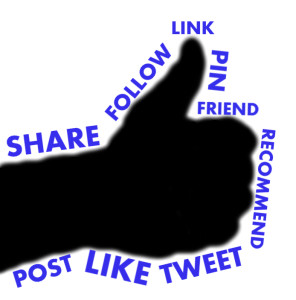by Glen Springer | Jan 31, 2014
 We all know that submitting a contact form, requesting a demo or consultation/review is a clear interaction and digital buying signals. However, we believe these to be verbal or explicit. The following, however, are more subtle and implicit buying signals that can be tracked (at the individual level) using marketing automation software:
We all know that submitting a contact form, requesting a demo or consultation/review is a clear interaction and digital buying signals. However, we believe these to be verbal or explicit. The following, however, are more subtle and implicit buying signals that can be tracked (at the individual level) using marketing automation software:
1. Repeat visits to your pricing page is the one of the clearest website interactions that indicates a buying decision.
Learning the price/cost involved is an obvious steppingstone in the sales process, one that has value to qualifying a prospect. Finding out the price up front, you are using it as a pre-qualifier. If someone checks your price and never returns, they’ve disqualified themselves – saving your sales team time. If a prospect checks your pricing page and then views more pages (and/or is a repeat visitor) they positively qualified themselves for next steps.
2. Navigating through a visitor flow that simulates your 3-5 call sales process.
This means content like your pitch video, about us page, features and benefits pages, webcasts, contact page, testimonials and services pages. All of these pages support buying decisions and were once part of the introductory sales pitch. Now that buyers are self-educating, you can map their online interactions to your traditional sales process and starting checking off buying signals they need to see and understand before moving forward.
3. Returning to your website through natural search.
If it’s a branded search, this shows they remember you enough to naturally look for you again. Checking the pages they view during this return visit can provide even more insight into their buying stage. If an identified prospect returns to your site through non-branded natural search (and the keyword is unavailable as much of it is today), it still shows a buying signal as they are in an active state of research (multiple visits). Again, deep dive into the specific pages from this return visit to better understand where they are.
4. Viewing your company’s executives social media profiles (especially LinkedIn).
At this point, prospects are usually asking “is this person qualified, and do I want to work with them?” This is different than viewing or following your company profile, where that may only be someone wanting to continue to be educated on the space (or they are your competitor and are mining your content).
5. An email has been opened and clicked numerous (6 or more times) indicating that an item has been shared and viewed internally.
Related to this, watch for multiple hits to same piece of content over multiple days by the same prospect. Since buying decisions require multiple opinions now, these positive buying signals show that the parties that need to be involved in the sale are becoming involved.
6. Downloading case studies, especially ones where the case study is in a comparable vertical.
Viewing these case studies not only provides social proof, but also indicates the prospect wanting a deeper analysis and understanding to see that what you provide (products/services) can work for them, too.
7. Re-watching videos or specific sections of videos.
Analyzing video heat maps show when videos or sections of videos have been re-watched. To best understand this buying signal, you’ll often need to look a little deeper at the section they are re-watching to be sure that the part that was reviewed is your value prop/business case/sales pitch/specific product feature and not industry education/general info.
If you are in sales or marketing, you know by now that the buying process has changed. Prospects are self-educating online and engaging in sales once they’ve “bought” what you offer. Using marketing automation software, you can more accurately assess a prospect’s stage in the buying process through non-verbal, digital interactions with your content (“content” being a very broad categorization of emails, webpages, social profiles, etc.).
For more on how a marketing automation platform can help sales, click here. Feel free to contact us with any questions.
by Glen Springer | Jan 31, 2014
 We all know that submitting a contact form, requesting a demo or consultation/review is a clear interaction and digital buying sign. However, we believe these to be verbal or explicit. The following, however, are more subtle and implicit buying signals that can be tracked (at the individual level) using marketing automation software:
We all know that submitting a contact form, requesting a demo or consultation/review is a clear interaction and digital buying sign. However, we believe these to be verbal or explicit. The following, however, are more subtle and implicit buying signals that can be tracked (at the individual level) using marketing automation software:
1. Repeat visits to your pricing page is the one of the clearest website interactions that indicates a buying decision.
Learning the price/cost involved is an obvious steppingstone in the sales process, one that has value to qualifying a prospect. Finding out the price up front, you are using it as a pre-qualifier. If someone checks your price and never returns, they’ve disqualified themselves – saving your sales team time. If a prospect checks your pricing page and then views more pages (and/or is a repeat visitor) they positively qualified themselves for next steps.
2. Navigating through a visitor flow that simulates your 3-5 call sales process.
This means content like your pitch video, about us page, features and benefits pages, webcasts, contact page, testimonials and services pages. All of these pages support buying decisions and were once part of the introductory sales pitch. Now that buyers are self-educating, you can map their online interactions to your traditional sales process and starting checking off elements they need to see and understand before moving forward.
3. Returning to your website through natural search.
If it’s a branded search, this shows they remember you enough to naturally look for you again. Checking the pages they view during this return visit can provide even more insight into their buying stage. If an identified prospect returns to your site through non-branded natural search (and the keyword is unavailable as much of it is today), it still shows a buying signal as they are in an active state of research (multiple visits). Again, deep dive into the specific pages from this return visit to better understand where they are.
4. Viewing your company’s executives social media profiles (especially LinkedIn).
At this point, prospects are usually asking “is this person qualified, and do I want to work with them?” This is different than viewing or following your company profile, where that may only be someone wanting to continue to be educated on the space (or they are your competitor and are mining your content).
5. An email has been opened and clicked numerous (6 or more times) indicating that an item has been shared and viewed internally.
Related to this, watch for multiple hits to same piece of content over multiple days by the same prospect. Since buying decisions require multiple opinions now, this is a positive sign that the parties that need to be involved in the sale are becoming involved.
6. Downloading case studies, especially ones where the case study is in a comparable vertical.
Viewing these case studies not only provides social proof, but also indicates the prospect wanting a deeper analysis and understanding to see that what you provide (products/services) can work for them, too.
7. Re-watching videos or specific sections of videos.
Analyzing video heat maps show when videos or sections of videos have been re-watched. To best understand this buying signal, you’ll often need to look a little deeper at the section they are re-watching to be sure that the part that was reviewed is your value prop/business case/sales pitch/specific product feature and not industry education/general info.
If you are in sales or marketing, you know by now that the buying process has changed. Prospects are self-educating online and engaging in sales once they’ve “bought” what you offer. Using marketing automation software, you can more accurately assess a prospect’s stage in the buying process through non-verbal, digital interactions with your content (“content” being a very broad categorization of emails, webpages, social profiles, etc.).
For more on how a marketing automation platform can help sales, click here. Feel free to contact us with any questions.
by gabriel_sales | Jan 30, 2014
 As we have written about previously, regardless of what the next hot marketing technology or trend is, content will be the fuel that gets us where we want to go. While many companies choose to produce their marketing content internally, there are several reasons that sales outsourcing might be a more cost-effective and efficient solution.
As we have written about previously, regardless of what the next hot marketing technology or trend is, content will be the fuel that gets us where we want to go. While many companies choose to produce their marketing content internally, there are several reasons that sales outsourcing might be a more cost-effective and efficient solution.
Here are 3 reasons to consider sales outsourcing content creation:
1. Marketers today are expected to act as publishers.
If you look at Salesforce’s blog, they are posting about 7 articles per day. Pardot, one of the leading marketing automation companies in the US, posts at least one every day. Oracle tweeted over 60 times on January 29th.
While your business may not need to be tweeting at the same rate as Oracle, you do need to publish relevant content, and you need to do it frequently. If your company is on the smaller side, this work can exhaust your resources, especially if you do not already have trained writers on staff. Similar to sales outsourcing, by leveraging an outsourced individual/team to write your blog articles and post them to social media, you can quickly and cost-effectively produce more content—improving both sales engagement and SEO.
2. Outsourced content producers understand how to tailor content to fit different stages of the buying cycle.
Each of your prospects is in a slightly different place in their buying cycle, and in order to move on to the next phase, each is going to need to see something slightly different. Prospects early in their buying cycle need to see very basic, educational content that speaks to their specific pains. Prospects closer to purchasing need to see detailed case studies, comparisons, demo videos, etc.
If you are not yet producing different types of content to match the various stages of your buying cycle, an outsourced content production team can help. By helping to map out each stage of your sales process and then coming up with different pieces of content for each, an outsourced team allows you to be confident that your content is actually working to bring prospects through your pipe and directly contributing to ROI.
3. It allows you to stay focused on serving your customers and looking for new revenue opportunities.
If you are at a tech startup or smaller managed services company, you likely do not have all the time in the world to sit around and come up with new ideas for content all the time. Even if you can come up with some ideas, seeing them through to execution can be difficult when you constantly have more pressing matters to attend to.
By leveraging outsourced content producers, you can stay focused on your company’s highest value activities—leaving content production to the experts.
For more on the value of outsourcing content production or other sales and marketing functions, read Scale Your Business for Sales with Sales Outsourcing. Feel free to contact us with any questions.
by gabriel_sales | Jan 30, 2014
 Answer: A lack of consistency.
Answer: A lack of consistency.
In today’s fast-paced and technology obsessed world, it has been estimated that people are exposed to 3,000-20,000 marketing messages per day (NYT).
While that estimate seems rather high, it highlights the sheer enormity of marketing content out there—all competing for our attention and clicks. In this chaotic and competitive environment, how do you create content that stands out enough to get your prospects to convert and/or buy?
You create an authentic brand story, and then tell that story consistently across multiple channels.
Telling a consistent brand story does not mean saying the exact same words over and over again in all of your marketing content. It means creating a consistent impression or experience for your prospect every time they interact with your company. Saying the same words multiple times may play a part in that, but there are also many other factors go into creating consistency for your prospects.
Let’s look at an example of an inconsistent brand story experience to illustrate the importance of consistency.
Let’s say George receives a marketing email from a managed service provider. The email has little in the way of color or graphics; the content of the email is educational, and the tone of the writing is serious and professional. George reads the email and decides to click through to the additional content being offered, as he is someone who highly values professionalism in the workplace.
However, when George clicks through to the MSP’s content, he finds a page with neon colored graphics, pushy advertisements and informal language. At first, George is so confused that he wonders if he even clicked on the right link. After confirming the MSP did indeed send him to this flashy, ad-covered web page, George is left even more puzzled.
He wonders which of the two experiences the company actually provides. One story being told insinuates the MSP is an industry thought-leader and approaches their work with a high level of professionalism and seriousness. The other story implies the MSP cares more about aesthetics and has more of a bold, ‘in-your-face’ type of approach to business.
Only one of these stories is appealing to George. But, because he cannot figure out which of the stories is true just by viewing the content, he is going to move on to a competitor who provides him with a less confusing—and more consistent—brand experience.
While George’s story is fictional, the problem of inconsistent marketing and sales content is real and may cause you to miss out on revenue opportunities. To make the brand story your are telling more consistent, pay attention to:
- your tone of voice
- your level of formality
- the colors, graphics and other visuals you use
- your communication frequency
- the connotations of the words you use
- your social media posting style
By providing a more consistent brand experience for your prospects throughout the length of your sales process, they will be much more willing to trust you and therefore eventually, make a purchase.
To learn more about improving your B2B sales process, read “3 Reasons Your B2B Sales is Failing”. Feel free to contact us with any questions.
by gabriel_sales | Jan 24, 2014
 40% of Americans now use Facebook everyday. Whether we are aware of it or not, I think this has had some interesting effects on marketing.
40% of Americans now use Facebook everyday. Whether we are aware of it or not, I think this has had some interesting effects on marketing.
Most of us now scroll through our various social media feeds a couple of times throughout the day, and as we do, we constantly see Youtube videos, memes, Buzzfeed and Upworthy-type content—all competing for likes and shares.
This creates the impression that going viral and getting shares is the ultimate goal to be achieved. And for marketers, it fuels the desire to create marketing content that will make those ‘like’, ‘share’ and ‘retweet’ counts jump into the thousands.
While there is nothing inherently wrong with that approach, marketing content should always have a goal that is tied to business. If your only goal is brand awareness, trying to create viral videos or blog posts is a good strategy—viral content gets seen by more people. However, if your goal is to put prospects into the pipe or close deals, going for viral might not be appropriate.
This is because being viral does not equate directly to having value (i.e. cat videos). Turning the thousands of viewers of your content into prospects and leads generally requires providing some sort of value. What exactly that value is will vary greatly depending on the product or service.
In the B2C space, providing entertainment might be enough value to initiate a purchase. There is a lot less risk purchasing B2C products, which allows more room to be impulsive. In the B2B space however, where purchases are sometimes multimillion dollar enterprise software solutions, content that provides a few laughs is not likely going to be enough to get a contract signed.
In more complex, higher-risk sales, creating content that is valuable should trump your desire for creating content that goes viral. Content that provides value in these complex sales includes opinion’s of thought leaders, industry reports, software demonstrations, product comparisons, case studies, etc. This type of informative and fact-based content enables prospects to educate themselves on your product or solution, so they are able to make an informed purchase decision. While this type of content may not be as exciting or share-worthy as the latest Volvo ad, it does provide the type of value that will build enough trust to motivate a high-risk purchase.
If you would like to know more about creating valuable B2B marketing content, read “5 Reasons Your Content Isn’t Converting.” Feel free to contact us with any questions.
 We all know that submitting a contact form, requesting a demo or consultation/review is a clear interaction and digital buying signals. However, we believe these to be verbal or explicit. The following, however, are more subtle and implicit buying signals that can be tracked (at the individual level) using marketing automation software:
We all know that submitting a contact form, requesting a demo or consultation/review is a clear interaction and digital buying signals. However, we believe these to be verbal or explicit. The following, however, are more subtle and implicit buying signals that can be tracked (at the individual level) using marketing automation software:
 We all know that submitting a contact form, requesting a demo or consultation/review is a clear interaction and digital buying sign. However, we believe these to be verbal or explicit. The following, however, are more subtle and implicit buying signals that can be tracked (at the individual level) using marketing automation software:
We all know that submitting a contact form, requesting a demo or consultation/review is a clear interaction and digital buying sign. However, we believe these to be verbal or explicit. The following, however, are more subtle and implicit buying signals that can be tracked (at the individual level) using marketing automation software:


